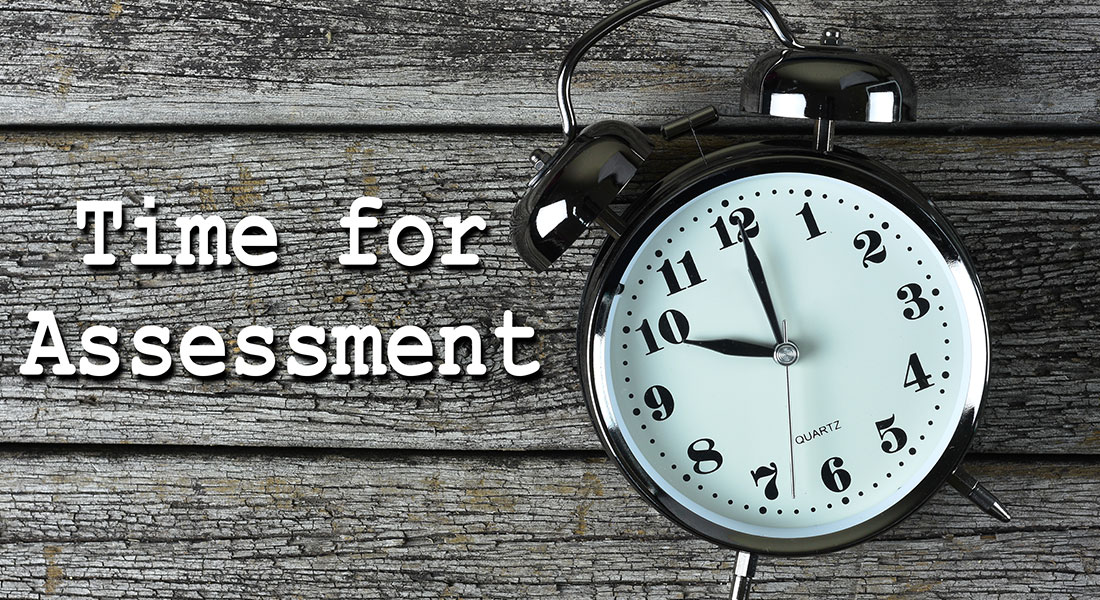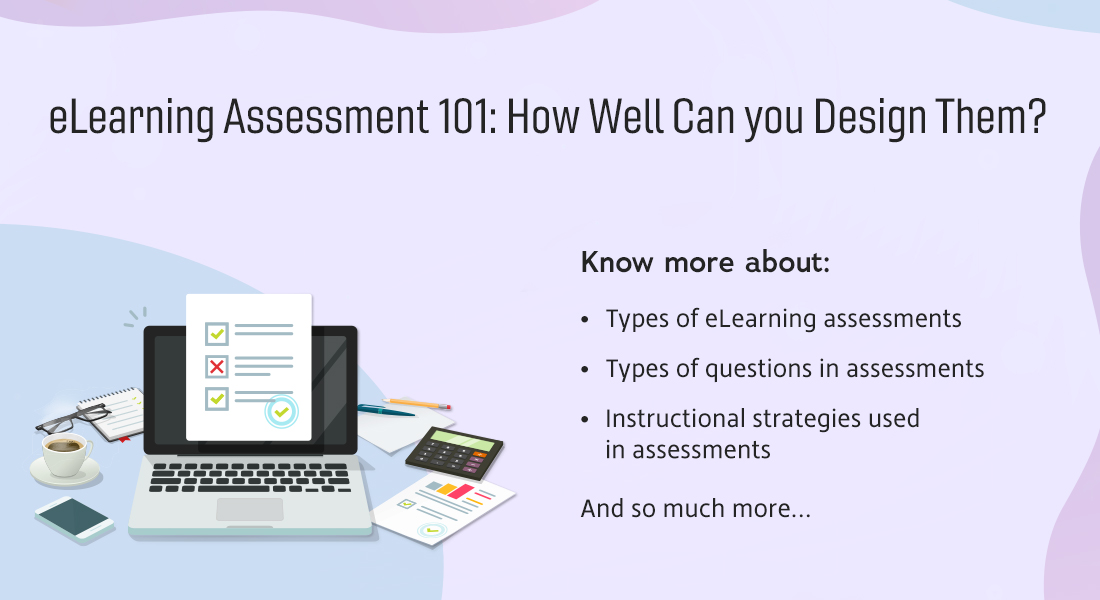5 Simple eLearning Assessment Design Tips to Enhance Learner Engagement

In the corporate world, eLearning is a key part of many organizations’ training and development strategies. But what you might not realize is that assessment design also plays an important role in enhancing learners’ engagement in these courses. In fact, research has shown that eLearning assessments can affect learner motivation as well as performance on both short-term and long-term learning outcomes. That’s why it’s so important for instructional designers to think about how to incorporate assessments into eLearning courses so they can maximize the benefits for learners and their organizations.
In this article, we take a look at eLearning assessment design tips that can help improve learner engagement and also benefit retention in the long run.
eLearning Assessments are Crucial for Enhanced Learning Outcomes
Here are a few design tips to help you design them well:
- Know the importance of assessments
- Don’t design irrelevant tests
- Focus on recurring formative assessments
- Focus on the quality of questions
- Ensure meaningful questions
Online Courses Require Assessment as Well
Don’t make the mistake of assuming that because an eLearning course is being delivered online, it doesn’t require assessment.
You may be wondering why we’re talking about assessment in an article on eLearning design. The fact is that assessments are a valuable tool in the eLearning process, and they can be used to show how well your eLearning course is working.
If you think of assessments as tests that measure how much knowledge learners have acquired from your course, then it’s easy to see how they can help you identify what your learners need to know before moving forward with their training. Assessments also provide feedback on how effective your instructional design strategies were–and if there are areas where improvements could be made in future iterations of the same course or new courses based on similar content areas.
It’s important to understand how assessment affects learner engagement and performance. Assessment design matters. It’s not just about measuring learning; it’s also about helping learners understand how well they have learned, what they need to do to improve, and how their knowledge can be applied in the real world.

Quick Design Tips to Make eLearning Assessments Fun and Engaging
Let’s find out how to design interactive assessments for enhanced learning outcomes.
Know the Importance of Assessments
When you’re designing an assessment, the first question to ask yourself is, “Do I really need to assess this?” If you do need to assess, then ask yourself if there are alternative ways of gathering the same information at a less costly, disruptive, invasive, or intrusive level.
For example: If we want to know if learners have understood our content, it may be more cost-effective or efficient (and less disruptive) for us as trainers or educators rather than learners themselves to conduct informal observations throughout their training experience.
If we want them to demonstrate their skills on specific tasks, can we use simulations instead of real-world scenarios where they might fail or make mistakes? This would also save time because they won’t need as much practice before being ready for assessment. Therefore, reducing any negative impact on productivity during training delivery.
→ Access recording: Take the Guesswork Out of eLearning Assessments [Webinar]
Don’t Design Irrelevant Tests
Designing a test that’s unnecessary or irrelevant to the learner’s development objectives will only serve to frustrate them. If you’re not sure what kinds of skills and knowledge you need to assess, ask yourself:
- What are my organization’s learning goals?
- What do I want my learners to know or be able to do after completing this course?
Once you have an understanding of these things, identify any gaps between where they are now and where they should be at the end of your eLearning course. Then decide which assessments will help close those gaps by measuring their current state against relevant criteria for success in their role within the organization.

Focus on Recurring Formative Assessments
Recurring formative assessments are a great way to keep track of learning progress, identify gaps in learning, and areas of improvement or strength. Recurring assessments can be used at different stages for different purposes:
- To identify where the learner is in their journey at any given point in time (e.g., after completing a module). This allows you, as an instructional designer, to differentiate your content based on where each learner is at throughout their learning journey, allowing you to create more targeted content.
- To monitor how much information has been retained by the learner over time (i.e., after a period of time). This helps determine if additional resources need to be added for reinforcement purposes through self-paced modules or instructor-led training sessions so that all employees have access to updated information no matter what stage they’re currently at with regard to their careers within your organization.
You can use a variety of questions to make the assessments more engaging. You can use various question formats like fill in the blanks, drag and drop, true/false, match the columns, and multiple-choice questions to make formative assessments more engaging.
Focus on the Quality of Questions
The most important thing to remember when designing your eLearning assessment is that the quality of your questions matters more than their quantity.
It’s tempting to try and cover too much ground in one section of your eLearning course, but this can lead to an overwhelming feeling for learners and make them feel as though they are being tested on things they haven’t learned yet or don’t understand yet.
Instead of focusing on covering everything under the sun at once, consider breaking up topics into separate modules and then asking questions about each module separately. For example: If we’re talking about how to use Slack (an online collaboration tool), I might ask three questions about how it works during the first lesson; then two or three more questions about different features during the next one; then maybe another two or three related ones later on.
Looking for more such tips? Watch this video to design engaging eLearning assessments.
Ensure Meaningful Questions
Ensure that your questions are relevant, meaningful, and accurate enough to measure actual learning outcomes effectively. It is important that your eLearning course is based on clear learning objectives and learning outcomes.
Once you have decided on the right assessment design for your corporate eLearning, make sure the questions included in it are relevant to the learner’s needs. For example, if you want them to learn how to use certain tools or software programs in their day-to-day work environment then provide them with examples of those tools/software programs in the course content. This way, they can practice using them before attempting any test questions explicitly related to those tools/software programs.
It’s a Wrap!
eLearning assessments are an essential component for measuring learner engagement and learning outcomes. If you want to improve your eLearning course, you need to ensure that your assessment design is helping you achieve this goal. We hope that this article has helped you understand the importance of assessment design and how it can be used to enhance learner engagement in corporate eLearning. Remember, the key is to think about how you want your learners to feel at the end of your eLearning course. If they leave feeling confident in what they’ve learned, then you’ve done your job well! Need more assistance in designing effective eLearning assessments? Access this webinar recording to take the guesswork out of eLearning assessments and design assessments that hook your learners.



![Creating Effective eLearning Assessments Leveraging Various Formats [Infographic]](https://blog.commlabindia.com/hubfs/Imported_Blog_Media/Creating-Effective-eLearning-Assessments-Leveraging-Various-Formats-Infographic.jpg)

